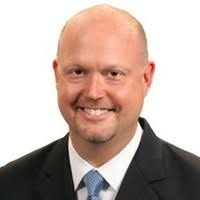
Velocity can be a killer, especially if you’re a massive institution grappling with stubborn top-line growth at home and a world outside that’s changing faster than the human brain can keep up.
I always love the ABA’s Wealth Management and Trust Conference because it’s where the leading edge of progress interacts with the global wealth industry’s center of gravity: the banks.
The biggest innovators in wealth management tend to be small enough to be nimble while the people with real skin in the game find “disruption” more disruptive than desirable.
Or at least that’s the world we’ve lived in for the last few years. And it’s the world companies like Envestnet are putting all-star teams together to flip on its head.
According to John Yackel, Executive Managing Director, Head of Institutional Business Development, Envestnet, Inc., and his industry superheroes, unlocking huge efficiency is really just a matter of getting the battleships moving in a coherent enough direction to convert their massive scale into momentum.
And once that starts happening, every aspect of the business as we know it is up for grabs.

Envestnet:
Building a dream team
Dream team shifting the core
Banks get a lot of grief in faster channels for spending more time fighting internal drag than they do taking advantage of their intrinsic strengths. They’re seen as big but sluggish, too busy fleeing institutional risk to give customers a really compelling experience.
That’s why I was intrigued to hear that this year’s show was in San Francisco, a city I remember most from the role local boutiques played in the venture capital tech boom. The choice hinted at a visionary program. I wasn’t disappointed.
Yackel’s roundtable, in particular, was practically a call to the banks to reevaluate all the assumptions that have been holding them back and embrace a more dynamic future.
It was a revolution disguised as an industry panel on “digital disruption.” No wonder the ABA put it in the big room, which seats up to 5,500 people.
And the implied lesson was clear: if you want to seize tomorrow, you need to cover all the phases of the wealth lifecycle, from day-to-day cash flow to generational planning.
Envestnet has all those pieces moving on its screen. It’s why Yackel called on Kevin Hughes of MoneyGuidePro, Drew Sievers of Trizic and his own colleague Stuart DePina to flesh out the theme in a packed ballroom themed: Digital Disruption in Wealth Management --- What's Next?
MoneyGuidePro is of course a planning suite. Trizic has increasingly focused on the trust and estate planning process.
DePina helped build RIA-focused technology platform Tamarac (now Envestnet | Tamarac) into an industry behemoth. He’s now folded the company’s data aggregation and analysis assets into his portfolio.
Individually, they’re all key players in their categories. Teamed up on stage, they can shift the industry battleship.
That’s not just the wind blowing from Silicon Valley, either. The people lined up on that stage share a simple and transformational message rarely seen outside the best billion-dollar superhero epics.
Yackel's onstage team was a breath of fresh air for what was once a stodgy conference centered on trust administration and regulatory updates says Gavin Spitzner, President, Wealth Consulting Partners, LLC.
Spitzner added, "the hour long program highlighted the growing trend toward integrated ecosystems in terms of how firms are operating in this space as both cooperators and competitors at the same time for the good of their respective clients."
Most of the innovation in wealth management, like Silicon Valley, is at the small end. Nimble RIAs chasing individual accounts are savage in their tactics. They’ll try any tool to swim just a little faster than competitors in their channel.
But they’re already lean operations, more interested in bolting on enough capacity —via robo or any other approach— to achieve scale. The more they can automate, the bigger they can grow before they hit their limits.
The banks, on the other hand, have collective access to at least 90% of the U.S. population. Very few of those households qualify as affluent much less ultra-high-net-worth, but in the aggregate there’s still real money in those accounts.
Rolling out incremental improvements across that vast customer population unlocks massive efficiencies and opportunities. Even if you’re a banker staring at zero growth, making every account work just a little harder generates real operational alpha.
It moves big needles. All it needs is the vision to make it happen.
Punch through to tomorrow
Of course winning is all about execution and when the future is coming at you so fast, it’s easy to slip into a reactive posture. It’s been a tough and nervous decade for a lot of people.
But in between market corrections and crashes, I’ve learned that innovation is a constant. Even if individual innovators run out of cash, the next generation that builds on their unrealized ideas will climb a little higher.
And the successes change the world.
Disruption is a process, not a goal. It actually looks a lot like life. The lives of your clients, of course. Your life. Institutions are a little different.
Add up all the talent on display on John Yackel’s stage and the financial conglomerate of tomorrow will be able to pursue that human dimension and the institutional perspective simultaneously.
Humans come and go, generating data and patterns of wealth. Every transaction can be predictive. Better predictions build better plans. And when a plan reaches its end, someone else takes over.
I could probably gush along these lines for days but the important thing is that technology keeps advancing even in a decade of surface noise. Day by day, tool by tool, upgrade by upgrade, companies like Envestnet and its partners bring a new industry landscape closer to daylight.
It might be a world where entities we now see as diametrically opposed become symbiotic partners. “Banks” may end up handling the mass market situations, making automatic decisions on billions of capital allocation questions a day.
“Advisors” pick up the human dimension when statistics aren’t enough. In between, a mosaic of intermediate business models, compensation approaches, sweet spots and delivery channels can thrive.
Robots and people. Tools and families. To swipe the Silicon Valley slogan, it’s not a red ocean any more where you have to kill to survive. It’s a blue sea with enough wealth to go around.
Utopian? Probably. Will there still be winners and losers, dynamism and drag? Definitely.
But we spend a lot of time in this industry assuming that the real visionaries come from outside, from what amounts to hobbyist ventures incubating in secret in places like Amazon and Apple and PayPal.
It’s time to look closer to home for the real heroes of tomorrow. We could have a FANG in the making, right here inside the incubator of one or more big banks.
Whoever wants to rise to the challenge can dream higher than a decade of dread. You don’t have to take a running leap into the future. Envestnet obviously has a timeline in place where people can evolve their industry footprint, step by step and tool by tool, chapter by chapter.



